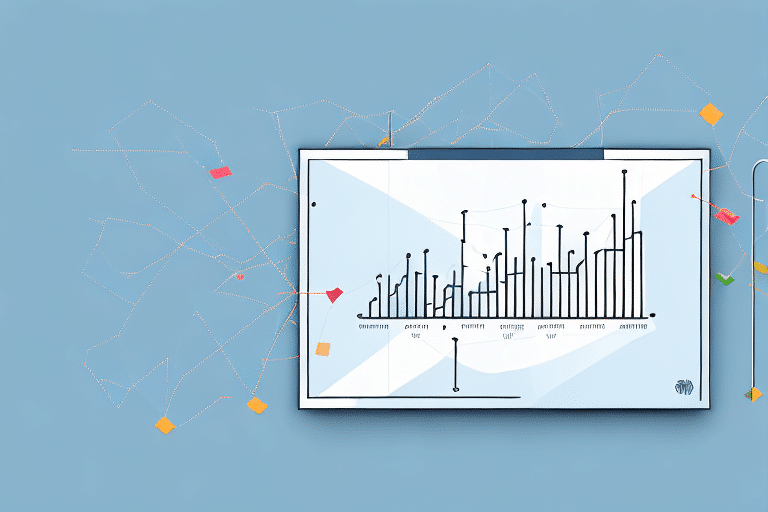Understanding Profit Margin: How to Measure It and Why It Matters for E-Commerce Operations
As an e-commerce business owner, having a strong understanding of your profit margins is crucial. Profit margin refers to the percentage of revenue that remains after deducting all expenses related to producing and selling your products. This metric not only indicates the profitability of your online store but also guides strategic business decisions. In this article, we will explore the different types of profit margins, how to calculate them, and their significance for the success of your e-commerce operations.
What is Profit Margin and Why is it Important for E-Commerce?
Profit margin is a vital financial metric that measures the profitability of a business by showing the percentage of revenue that exceeds the costs of production and operations. For e-commerce businesses, maintaining healthy profit margins is essential for sustainability and growth. Without a clear understanding of your profit margins, making informed decisions about pricing, budgeting, and expansion becomes challenging.
Understanding your profit margins allows you to identify areas where costs can be reduced, optimize pricing strategies, and enhance overall profitability. According to a Statista report, the average profit margin for e-commerce retailers varies but typically ranges between 10-20%, depending on the industry and business model.
By analyzing your profit margins, you can determine which products are the most profitable, negotiate better deals with suppliers, and make data-driven decisions that positively impact your financial bottom line.
Types of Profit Margins
There are three primary types of profit margins that provide valuable insights into different aspects of a business’s financial health:
Gross Profit Margin
Gross profit margin measures the percentage of revenue remaining after deducting the cost of goods sold (COGS). COGS includes all expenses directly related to producing or purchasing the products you sell, such as materials, labor, and shipping costs. A higher gross profit margin indicates that a company can produce goods cost-effectively or price its products higher.
Net Profit Margin
Net profit margin accounts for all expenses, including COGS, administrative costs, taxes, and interest. This metric provides a comprehensive view of a company’s overall profitability. According to the Harvard Business Review, a higher net profit margin reflects effective management and efficient operation.
Operating Profit Margin
Operating profit margin measures the percentage of revenue that remains after subtracting operating expenses, such as sales, general, and administrative expenses, but before deducting taxes and interest. This margin focuses on the profitability of the business’s core operations, excluding non-operational expenses.
Calculating Profit Margins
Calculating Gross Profit Margin
- Determine your total revenue for a specific period (e.g., a month or a year).
- Calculate your total cost of goods sold (COGS) for the same period.
- Subtract COGS from revenue to obtain your gross profit.
- Divide gross profit by revenue and multiply by 100 to get your gross profit margin percentage.
For example, if your revenue is $200,000 and your COGS is $120,000, your gross profit margin is 40%.
Calculating Net Profit Margin
- Determine your total revenue for a specific period.
- Calculate all expenses, including COGS, administrative costs, taxes, and interest.
- Subtract total expenses from revenue to obtain your net profit.
- Divide net profit by revenue and multiply by 100 to get your net profit margin percentage.
If your revenue is $200,000 and your total expenses are $180,000, your net profit margin is 10%.
Operating Profit Margin vs. Gross Profit Margin
While gross profit margin focuses solely on the cost of products sold, operating profit margin provides a broader perspective by including operating expenses. This distinction helps businesses understand not just how well they manage production costs but also how effectively they control other operational expenses.
Strategies to Improve Profit Margins
Cost Reduction Strategies
Reducing costs can significantly enhance your profit margins. Here are some effective strategies:
- Streamline Operations: Automate repetitive tasks to reduce labor costs and increase efficiency.
- Negotiate with Suppliers: Seek better terms or bulk discounts to lower your cost of goods sold.
- Optimize Shipping and Packaging: Use cost-effective shipping methods and sustainable packaging to reduce expenses.
- Invest in Energy-Efficient Technologies: Lower utility costs by implementing energy-efficient solutions.
Pricing Strategies
Setting the right price is crucial for maximizing profit margins without deterring customers. Consider the following approaches:
- Value-Based Pricing: Price your products based on the perceived value to the customer rather than solely on cost.
- Dynamic Pricing: Adjust prices in real-time based on demand, competition, and other market factors.
- Bundle Products: Offer product bundles at a discounted rate to increase average order value.
Leveraging Technology
Investing in technology can streamline operations and reduce costs. Tools such as inventory management systems, customer relationship management (CRM) software, and analytics platforms can provide valuable insights and enhance efficiency. For more information on selecting the right e-commerce platform, refer to resources like Shopify's guide on e-commerce platforms.
Common Mistakes to Avoid
Accurate calculation and monitoring of profit margins are essential, but several common mistakes can lead to misleading results:
- Overlooking All Expenses: Ensure all costs, including shipping, marketing, and overhead, are accounted for.
- Misreporting Revenue or Expenses: Maintain precise financial records to avoid errors in calculations.
- Confusing Profit Margin Types: Clearly differentiate between gross, net, and operating profit margins to avoid confusion.
- Infrequent Monitoring: Regularly track profit margins to quickly identify and address any issues.
- Using Inaccurate Data: Rely on reliable data sources to ensure the accuracy of your profit margin calculations.
By avoiding these mistakes, you can maintain accurate financial insights and make informed business decisions.
Measuring and Using Profit Margins for Business Decisions
Your profit margins are directly linked to the profitability and sustainability of your e-commerce business. By understanding and monitoring your profit margins, you can make informed decisions that positively impact your financial health. Here’s how to effectively use profit margins in your business strategy:
- Optimize Pricing Strategies: Adjust your pricing based on profit margin analysis to maximize profitability.
- Manage Expenses: Identify and reduce unnecessary expenses to improve overall margins.
- Expand Product Offerings: Focus on high-margin products and consider introducing new products that align with market demand.
- Invest in Efficiency: Allocate resources to areas that enhance operational efficiency and reduce costs.
By leveraging your profit margin data, you can strategically plan for growth, optimize operations, and ensure long-term success.
Measuring Success: Key Performance Indicators (KPIs) to Track
Tracking specific key performance indicators (KPIs) can provide valuable insights into your e-commerce business’s profitability. Important KPIs to monitor include:
- Gross Profit Margin, Net Profit Margin, and Operating Profit Margin
- Customer Acquisition Cost (CAC)
- Customer Lifetime Value (CLTV)
- Shopping Cart Abandonment Rate
- Return on Ad Spend (ROAS)
Regularly monitoring these KPIs enables you to make data-driven decisions to optimize profitability and ensure ongoing success. For more on tracking e-commerce KPIs, refer to Shopify's guide on e-commerce KPIs.
Conclusion
Profit margins are critical to the success of any e-commerce business. By understanding the different types of profit margins, regularly monitoring them, optimizing pricing strategies, reducing costs, and investing in the right technologies, you can enhance your e-commerce business’s profitability and ensure long-term success. Implementing these strategies will enable you to make informed, data-driven decisions that drive growth and sustain your business in a competitive market.




















